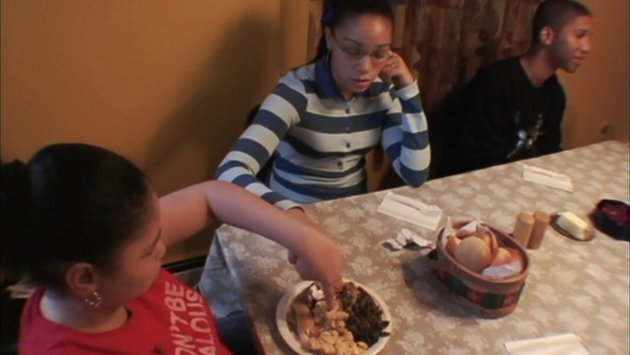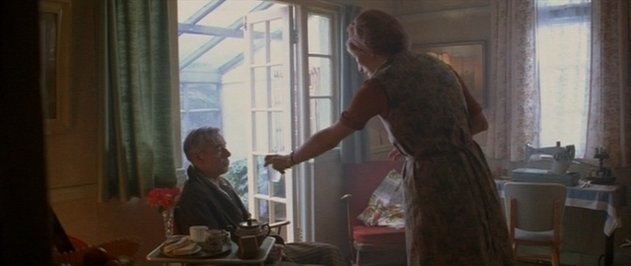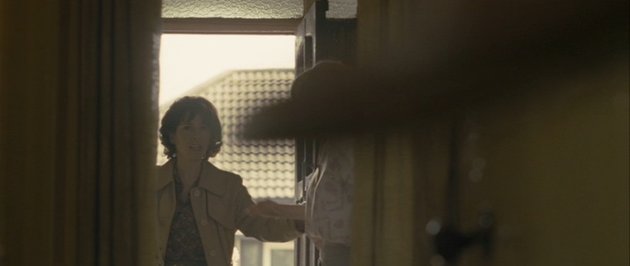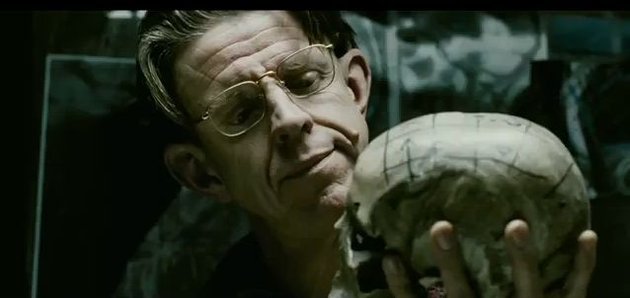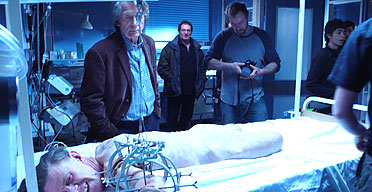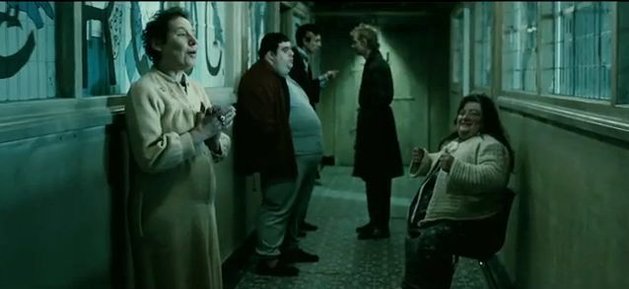Mark Haddon’s celebrated, multi-award-winning novel is beautifully and imaginatively adapted into a stage play by Simon Stephens, directed by Marianne Elliot, co-director of the National Theatre’s acclaimed War Horse.
http://nyuskirball.org/calendar/doginthenighttimeencore
Film
DURATION
2 HRS 30 1 intermission
TICKETS
$25
50/50
[easyazon-image align=”left” asin=”B004QL7KKC” locale=”us” height=”110″ src=”http://ecx.images-amazon.com/images/I/51K1deeqtrL._SL110_.jpg” width=”78″]There aren’t very many feel-good comedies about cancer, but if you gloss over the illness and disability part a bit as in [easyazon-link asin=”B004QL7KKC” locale=”us”]50/50[/easyazon-link] you come pretty close. Adam is diagnosed with a rare type of spinal cancer (the more syllables it has, the worse it is) and is promptly prescribed a round of chemotherapy and some new elderly friends with medical marijuana. (Since Adam doesn’t seem to worry about either bankruptcy from medical bills or arrest from medical marijuana, we can only surmise that 50/50 is set in Canada.) Adam considers his mother a Smother (when she’s not busy taking care of his befuddled dad) so turns to his buddies to help him through the crisis. His best friend Kyle makes jokes about his situation and uses it to attract women, but is a true and loyal friend when Adam’s girlfriend can’t handle the stresses of the low-level caregiving (dropping off and picking up Adam from chemo) she’s asked to perform. Reality only intrudes into Rachel’s world occasionally, when Adam pukes in the toilet, but when he finally gets angry enough at her to break up, she wails that he hasn’t considered how hard it is on her.
Though he doesn’t take Rachel back, it suddenly dawns on Adam just how hard it is on his mother taking care of his Dad. He further comes to the realization that she does so out of love, and not letting her take part in his caregiving is effectively shutting her out of her one son’s life (or death, as it may be). When chemo fails, Adam calls on her for support for a dangerous, last-chance surgery. She shows up at the hospital with her husband in tow. Though Adam’s dad doesn’t understand what’s happening or even who Adam is, he still has enough of the long-term memory synapses to know he loves Adam; they hug and both get weepy.
The surgery was a success, though the patient lost part of his pelvis, hip, and the myelin sheath of the nerve in one leg. Adam’s recovery from that must have been painful, expensive, and long, the movie skips ahead to when he’s “walking up a storm”, with better hair, better girlfriend, and better relationships with his mother and best friend.
Pressure Cooker
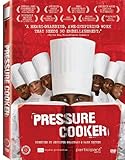 Pressure Cooker is a documentary about inner-city high school students in a rigorous culinary arts training course attempting to win college scholarships, and the younger sister of one of the featured students is blind and is described as having a physical disability. Erica’s sister is (probably deliberately) not named in the movie or the accompanying web site, but Erica repeatedly describes her as her reason for wanting to succeed. There seems to be a lack of adult supervision in their household, so it has fallen to Erica to be de facto caregiver; she dispenses her sister’s medication daily, and is seen pointing out where the food is on her plate.
Pressure Cooker is a documentary about inner-city high school students in a rigorous culinary arts training course attempting to win college scholarships, and the younger sister of one of the featured students is blind and is described as having a physical disability. Erica’s sister is (probably deliberately) not named in the movie or the accompanying web site, but Erica repeatedly describes her as her reason for wanting to succeed. There seems to be a lack of adult supervision in their household, so it has fallen to Erica to be de facto caregiver; she dispenses her sister’s medication daily, and is seen pointing out where the food is on her plate.
Erica later wins one of the coveted scholarships, and though her younger sister is happy for her, she bitterly says “I don’t see why you want to go.”
Despite the realistic portrayal and inclusion of a blind person, Pressure Cooker must unfortunately go into the Disability Movie Hall of Shame for having neither captions nor subtitles.
Made in Dagenham
 Disabled veteran George doesn’t get much screentime in Made in Dagenham, but that merely belies the size of the role disability and caregiving plays in the women’s rights movement. George would likely be diagnosed with Post Traumatic Stress Disorder today, and his wife Connie is not only the breadwinner for the two of them (working as a machinist in Britain’s Ford factory), but also George’s sole, unpaid caregiver. There was little understanding and even less treatment available for PTSD back then, and Connie can only describe George to others in her labor union as “touched”.
Disabled veteran George doesn’t get much screentime in Made in Dagenham, but that merely belies the size of the role disability and caregiving plays in the women’s rights movement. George would likely be diagnosed with Post Traumatic Stress Disorder today, and his wife Connie is not only the breadwinner for the two of them (working as a machinist in Britain’s Ford factory), but also George’s sole, unpaid caregiver. There was little understanding and even less treatment available for PTSD back then, and Connie can only describe George to others in her labor union as “touched”.
Connie, Rita O’Grady, and the other machinists in their all-female leatherworking shop realize that they’re being paid much less than their male counterparts for skilled work, and organize a strike. Connie has been the worker’s representative to management up to that point, but when relations break down she explains to Rita that she’d prefer to take a backseat in the struggle because she has to put George first.
To illustrate her domestic worries, one night shortly thereafter George wakes up screaming, and becomes combative when Connie tries to soothe him. Agitated, he makes for the door, worried that Connie will “try to put [him] away”. Connie embraces and reassures him. In a later deleted scene, Connie gives the confused and forgetful George his medication just before leaving for a union meeting, reminding him that he knows where she’ll be.
Later when Connie returns, she finds that without supervision, George has committed suicide.
Her fellow union machinists support her during George’s funeral, and later Rita uses George’s story to garner support for equal pay among the male workers. George’s service and the need to fight for what they believe in speaks to the union men in terms they can relate to, and they vote to support the women. With that and the help of Labour politician Barbara Castle, the female machinists win concessions from the British government, and a guarantee of equal pay in the future.
The Oxford Murders
 Our first glimpse of the myriad allusions to disability in The Oxford Murders is that of an elderly lady, Mrs. Eagleton, who rents out a room to Martin, a promising young mathematics student who just arrived at Oxford. It is not the intent of Disability Movies to unnecessarily conflate advanced age with disability; we are not shown explicitly what Mrs. Eagleton needed help with or why she had no home health aide–she seems perfectly able to walk to the door, feed herself and play board games–though she is described as a cancer survivor. Her daughter Beth is introduced as her sole caregiver, and vocalizes her resentment of that role to Martin.
Our first glimpse of the myriad allusions to disability in The Oxford Murders is that of an elderly lady, Mrs. Eagleton, who rents out a room to Martin, a promising young mathematics student who just arrived at Oxford. It is not the intent of Disability Movies to unnecessarily conflate advanced age with disability; we are not shown explicitly what Mrs. Eagleton needed help with or why she had no home health aide–she seems perfectly able to walk to the door, feed herself and play board games–though she is described as a cancer survivor. Her daughter Beth is introduced as her sole caregiver, and vocalizes her resentment of that role to Martin.
Martin attempts to meet an old friend of Mrs. Eagleton, prominent mathematician Arthur Seldom. Seldom gives him the brush-off until they happen to visit Mrs. Eagleton’s home at the same time to find her dead, with a broken nose. The police briefly question her daughter, but Martin–who has been attracted to her–assures them she wouldn’t have done it. Instead, he turns their attention to a strange sequence of symbols they notice. The two mathematicians and the police concur that there’s something fishy about this, and speculate wildly about the meaning of the symbols.
(Permit me a brief digression while I inform you of the fleeting shot of a black cab stopping at a curb across the street from our protagonists during one such conversation about the interpretation of the symbols, and once the cab pulls away it becomes apparent that a wheelchair user and companion have disembarked. Huzzah for the wheelchair accessible London cab fleet!)
Here the movie takes a turn for the weird. Seldom and Martin visit an old friend of Seldom’s in the hospital, deranged triple-amputee Kalman. An able-bodied actor was used, necessitating an uncomfortable false bed for the actor and digital trickery to erase the superfluous limbs:
Kalman is a great part. He exists only in flashbacks, and (since flashbacks are usually mute) there is no scripted dialogue. He starts off a young chap in the 1970s, with sideburns, wide lapels and garish ties: the makeup people give me fresh, prosthetic cheeks, my own being too old and sunken. This is just the beginning. Kalman is an Oxford don, driven mad by his inability to solve a complex mathematical quandary. His laboratory becomes a lair; he showers in the kitchen; he throws computer monitors through the window (yay!). In addition to going mad, Kalman develops horrible cancers: both his legs fall off. He gets to buzz around in an electric wheelchair for a while, carrying a skull. Then one of his arms falls off, and he’s last seen lying naked on a hospital gurney, writing one word repeatedly with his remaining hand.
http://www.guardian.co.uk/film/2008/apr/18/2
Kalman is portrayed in a dehumanizing manner; stark naked on his hospital bed, rear end instantly noticable. His remaining arm is encased in what looks almost like an Ilizarov or Taylor Spatial Frame used for bone lengthening, with which he scribbles on paper madly. His arm assemblage is suspended by wires to enable him to write with less fatigue, but succeeds in giving him a tragic, puppetlike appearance. Nurses come and go from the room, leaving the door open while they talk to others in the corridor with nary a thought for his privacy. His visitors don’t even bother to talk to him, not even to see if he’s aware of their presence or will talk about the symbols.
And do I really need to explain the idiocy of suggesting mathematics can be a vector for mental illness? Any student will say their calculus class is driving them crazy, but that’s only a figure of speech.
The trip to the hospital to gawk at Kalman nevertheless proves fruitful, as the two amateur investigators meet a haggard-looking older man in the hospital corridor eager to discuss symbols with them. (The audience is meant to consider this man mentally ill or possibly intellectually disabled, as signified by his raving and bad teeth.)
Also, one nurse in particular catches Martin’s eye, and they embark on a relationship even though he had seemed to be interested in Beth. They share at weird sex scene where they make a mess with spaghetti.
Martin comes to the conclusion that the symbols mean a mass murder is imminent, and feeds his ideas to the police. A check of newspaper headlines reveals a field trip for students with intellectual disabilities, and police attempt to intercept their school bus but are thwarted when the bus swerves into a tree and explodes in a giant fireball. Much is made in the media of the catastrophe, and the students are consistently referred to as “children” and “innocents” (though they look to be young adults).
When the driver of the bus is found to be the same man from the hospital corridor, his motives are revealed; he didn’t orchestrate the accident out of some twisted desire to kill, but to obtain a kidney for his daughter who needed a transplant. (Ethical issues about organ transplantation from murder victims, and from the intellectually disabled who presumably have not given informed consent, are not discussed.)
Martin’s theory regarding the symbols collapses, and he realizes that he should have applied Occam’s Razor much earlier in the investigation. He confronts Beth about Mrs. Eagleton’s death, and she reveals that she murdered her mother in order to clear the way for a relationship with him.
Samson and Delilah
 Samson & Delilah is set in a remote Aboriginal Community, with the Aboriginal Delilah playing a much more realistic and sympathetic role than her namesake in the Bible.
Samson & Delilah is set in a remote Aboriginal Community, with the Aboriginal Delilah playing a much more realistic and sympathetic role than her namesake in the Bible.
Early in the film, it is shown that an unowned wheelchair is left outdoors, where it serves as an amusing ride for the village urchins, the largest and least promising of whom is age-indeterminate surfer-dude-looking Samson. Samson intimidates a smaller boy into turning over the wheelchair to him, and promptly uses it to play in. He sits outside of the Aboriginal community’s only grocery store in it, begging for handouts; no one is fooled.
Samson is old enough to have sprouted a small mustache and to occasionally amuse himself by playing guitar with some older guys who hang out near the general store. If he has parents, grandparents, or other relations, they don’t seem to be around or overly concerned with his slovenliness and lack of ambition. When he is at his disheveled, dusty home, he huffs glue and/or other inhalants; in one scene where he does some grafitti, he is shown giving a long sniff to the point of the permanent felt-tip pen.
Delilah, by contrast, lives a life of responsibility: she is the primary, if not sole, and most likely unpaid, caregiver for her grandmother Kitty, who is physically disabled and/or frail. Whatever Kitty has is not specified, but Delilah argues with her every morning to take her pills, and is frequently seen pushing her in a standard manual wheelchair (the health care system of that time and place most likely handed out one standard model of wheelchair, regardless of how inappropriate it was to the dusty terrain or their clients’ needs).
Delilah is shown to regularly take Kitty to a spartan corrugated metal chapel containing little more than a large cross, and to appointments at a clinic, at which no wheelchair ramp is seen. Someone (probably Delilah and/or clinic personnel) most likely has to haul Kitty in bodily, separately from her wheelchair. Though Kitty evidently does get to her clinic appointments, the movie does not make it clear exactly how this is accomplished.
Kitty and Delilah make a meager living by selling Kitty’s Aboriginal paintings to a white man who picks them up from them and takes them into town for galler(ies) to sell (at a large markup, Delilah would later discover).
One day while they are out in the yard, Kitty sees Samson just outside their property, and asks who he is. When Delilah tells her, Kitty says they should get married, though Delilah had evidenced no prior romantic interest in Samson (perhaps because she knows Samson as an idler with no visible means of support).
The grandmother’s idea is influenced by the fact that they are the “same skin”. As Americans watching this, the first thought was that like some of our mixed-blood blacks and dubious ancestried whites, some Aboriginals were particular about the color of one’s complexion. As it turns out, what Kitty really had in mind were Aboriginal family systems concerning who was related to whom and proprieties concerning who among these could legitimately marry. This, and several other things, including why the old women of the town beat Delilah bruised and bloody after the death of her grandmother, which were puzzling and left unexplained in the film, are explained in the film’s official FAQ.
Samson’s courting rituals are unmistakable and amusing, as is Delilah’s initial rejection of her putative husband. The two later form a bond after the grandmother dies and the neighborhood biddies beat up Delilah in their quest to find a scapegoat for Kitty’s death. Samson steals the shared community truck and drives the unconscious Delilah as far its tank of gas would take them. He stops only to siphon gas from other vehicles, but uses the soda bottle of gasoline he siphoned for huffing. It never occurs to him to use siphoned gas to refuel the truck when they finally run out of gas. (Though it is never overtly stated, it is implied that Samson has mild brain damage from his inhalant abuse.)
The pair end up sleeping under an overpass, sharing an encampment with an alcoholic homeless older Aboriginal man, who luckily proves friendly to them, albeit in a strange way (among other things, he serves them re-heated, canned spaghetti for breakfast while singing about it). He repeatedly asks the pair to talk to him, to tell him their story, but they remain silent. When he threatens to withdraw his assistance one day, Samson stutters out his name and we realize one of the reasons he doesn’t talk much.
If Delilah’s grandmother wanted her to marry on the theory that in Samson Delilah would have a protector, if not a provider, Samson proves a failure at this too: in one scene, Delilah is abducted by a group of white youths with a car, and Samson almost doesn’t notice while he is walking and huffing gasoline fumes from his soda bottle of siphoned gasoline. (It is only upon her return, with a black eye and most likely raped, that she resorts to huffing. Previously, her “escape” had been listening to music from a car cassette player.) Again the film’s FAQ comes to the rescue: it explains that Samson also has hearing loss and the couple has mostly been communicating through Aboriginal hand signals and body language. This comes into play again when Delilah is similarly hit by a car; Samson is about ten paces ahead and doesn’t notice.
He makes no attempt to retrace his steps and recover her; instead he huffs himself into a weeks-long drug induced stupor. Delilah appears almost as an angel in a clean white hoodie, wearing a shiny leg brace and using a crutch. She’s called in the cavalry; a man from their community picks up the near-dead Samson, carries him to the recovered truck, and drives them both back.
This time, the cadre of old ladies beats Samson with tree limbs, but Delilah fights them off. She cleans up the shack that she and her grandmother called home, burns a painting in tribute, gives Samson a good bath and sets him up in Kitty’s former wheelchair with a radio to keep him entertained. The film ends on a hopeful note; perhaps Samson will recover from the damage he’s done to his brain with the love of a good woman, and for all his faults, perhaps he’ll be a good companion to the scarred Delilah.
Note: though Samson and Delilah has minimal dialogue throughout, only the dialogue in their Aboriginal language is subtitled. English dialogue is not captioned, so deaf and hard-of-hearing folks may have a little trouble following the story. We don’t quite have the heart to stick this movie in the Hall of Shame though.
Winter’s Bone
 The winner of the Grand Jury Prize at Sundance, Winter’s Bone is about 17 year old “Ree” (played by Jennifer Lawrence) who’s living in terrible poverty in the Ozarks, the sole caregiver to her 2 younger siblings who have no apparent disabilties beyond being 6 and 12 years old, and a mother who is non-functioning. In some scenes, the mother seems to be catatonic or otherwise non-responsive, but in a few she is seen doing some simple tasks (i.e., folding a shirt).
The winner of the Grand Jury Prize at Sundance, Winter’s Bone is about 17 year old “Ree” (played by Jennifer Lawrence) who’s living in terrible poverty in the Ozarks, the sole caregiver to her 2 younger siblings who have no apparent disabilties beyond being 6 and 12 years old, and a mother who is non-functioning. In some scenes, the mother seems to be catatonic or otherwise non-responsive, but in a few she is seen doing some simple tasks (i.e., folding a shirt).
It is not made clear to the audience exactly what it is the mother has, how long she’s been this way, or her prospects for recovery. (Possibilities include depression or other mental illnesses, brain injury from drug use, and Multiple Sclerosis.) In one scene, Ree tells someone that her mother has been taking medication, but it’s not been helping. Her father has been missing for two weeks.
While the situation is not easy, Ree is managing things well enough, until a bail bondsman comes to the house and informs her that her father had put up the house as a bond, and if he fails to show on his court date, they are entitled to seize the house. With no alternative income or legal protections, Ree is forced to try to track down her father by asking what seems to be everyone in the immediate community.
Nearly all of them have some distant, unspecified kinship tie to her (that, the squirrel-shooting and skinning scene, and the fact that a number of people own banjos and know how to play them, initially led me to believe that this picture was set in Appalachia. I hadn’t known there was for all practical purposes an Appalachia in Missouri.) but for the most part, they are distinctly unhelpful even though they most likely are aware of her plight. Ree must tell the younger children “Never ask for what should be offered freely.”
At one point, an associate of her father’s takes her to an abandoned, burned-out meth lab and tries to sell the story that her father had died in the explosion. But she’s not buying it. She knows her father is well-known for producing methamphetamine without blowing himself up, and the weeds in that place are waist-high. She assumes her father is living but on the lam, until he misses his court date. Then, foul play becomes the most likely scenario.
Like the mountain people of the Eastern Seaboard, or the mafia in big cities, there is a “code of silence”, an omerta, if you will. The main industry of this area was meth, and because Ree’s father had planned to inform to law enforcement, persons unknown had killed him and hidden the body. Ree is faced with the difficult situation of going against the culture of her community to find out what happened to her father, and prove her father’s death to the law enforcement system. Though Ree’s immediate environment contains few people who can be said to be good role models by conventional standards, as most of the adults she encounters are either producing or using illegal drugs of one sort or another, she says “no” to drugs, though they are frequently offered to her. Perhaps because she’s intelligent enough to see the consequences of the drug trade in the faces and places she sees everyday. Eventually, she finds a way to make a compromise between her conscience, her practical needs, and the community ideal of not “being a rat”.
A scene where Ree has a talk with an Army recruiter, having seen a poster that promised a $40,000 bonus for enlisting, makes it clear that while the money would be the answer to her prayers, mainstream society, with arbitrary barriers and no exceptions, offers her few legal and legitimate ways to solve her financial and sociological problems.

